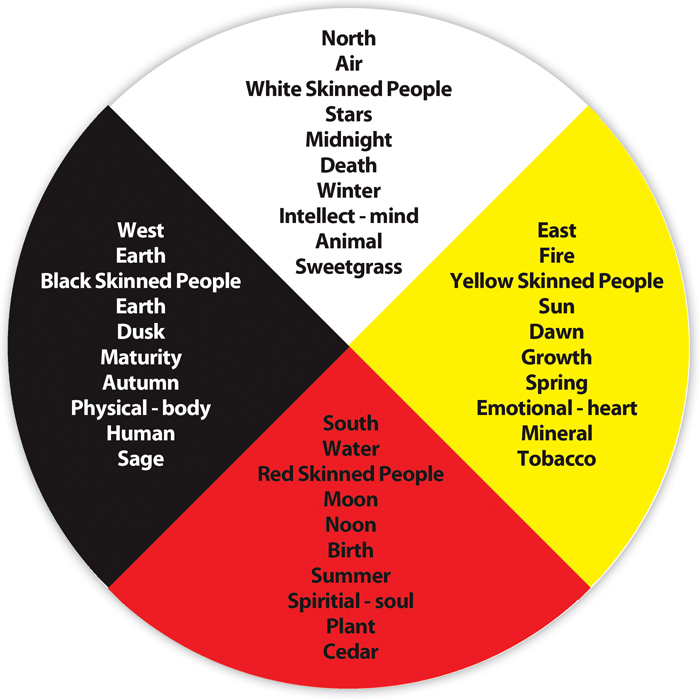Today was the start of our first summer course, on Leadership and Counselling Diverse Cultures in Education with Carolyn Kenny. While I know that all manner of diversity will be addressed throughout the course - and in our own research - today’s lesson was predominantly on some of the differences between the traditional Western education system and that of the Aboriginal groups found in BC. Alanaise Goodwill, a professor from Simon Fraser University, visited and explained about the concept of the Medicine Wheel.
 |
| This is one example of the Medicine Wheel's representations. |
This was a new concept to me, although it seemed familiar to many of my classmates; just another example of how diverse is our personal knowledge of diverse cultures! Alanaise explained how the Medicine Wheel was initially a wayfinding system: a circle would be drawn on a field in the prairies, and the people would know to stand in certain places on the circle to navigate during different times of the year. Here in Southern BC finding one’s way via landmarks isn’t all that difficult; but I know from growing up on the prairies that standing in the middle of a field with the vast sky overhead and acres of grass around you can leave you directionless. In modern times, we might just pull out the GPS on our phone to guide us, but as Alanaise explains, the Medicine Wheel was from a time long gone, when the people weren’t confined to reserves but roamed the land freely. Therefore, while its uses as a physical wayfinder have gone, the symbol of the Medicine Wheel has come to represent the sharing of ancient beliefs and traditions to help the next generation find their way through life.
 |
| The Medicine Wheel found in Big Horn, Wyoming. |
At the close of the class, Alanaise had us write down our ten most favourite activities (mine included reading, exercising, spending time with my family, gardening…). Then, we were to note for each whether it was spontaneous or planned, had a cost or was free, and was done alone or with others. Finally, we were to determine what sort of activity it was, as outlined on the quadrants of the Medicine Wheel: intellectual, spiritual, emotional, or physical. Looking at our lives, was there balance? Was each part of the Wheel represented? Alanaise emphasized for us how balance in life is crucial, and is a key element in Aboriginal teachings.
I feel fortunate to have been a part of this lesson today. While I am not Aboriginal myself, I too strive for balance in my life, and respect the ancient teachings that promote healing and connectedness among all people. The search for balance and well-being is ongoing, no matter your background or beliefs.

No comments:
Post a Comment